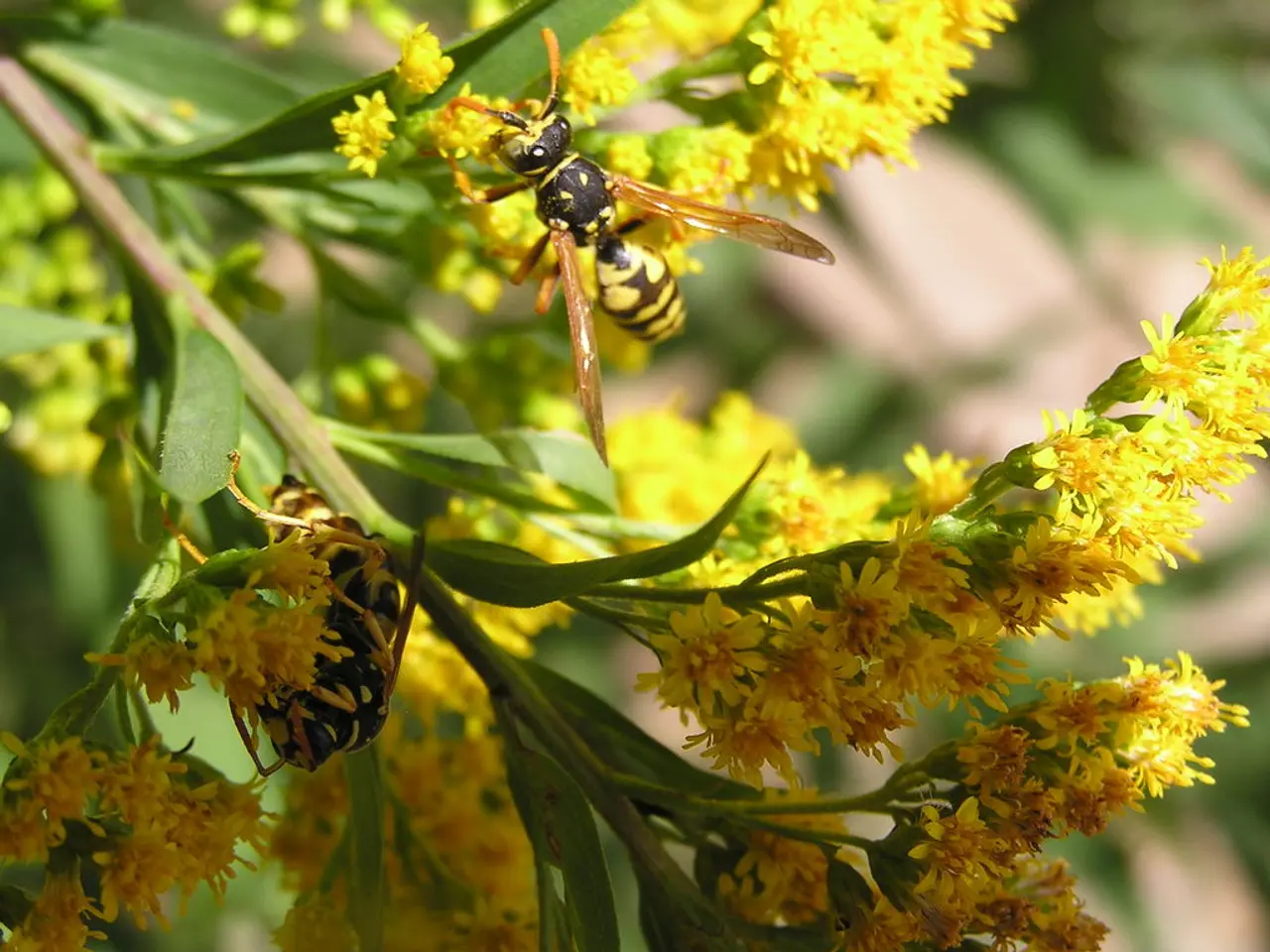Removing Aphids Organically in Your Garden and Home
Indoor gardening enthusiasts may find themselves grappling with a common gardening problem - aphids. These tiny pests can cause significant damage to plants, leaving leaves mottled, yellowing, turning brown, and curling under. But fear not, as there are several natural and safe methods to eliminate aphids from your indoor garden.
One effective approach is to spray plants with a mild soapy water solution. Mix a few drops of fragrance-free dish soap with water, and use a cloth or spray bottle to apply the solution, targeting leaves and stems (both tops and undersides). It's recommended to test the solution on a small area first to avoid any potential damage.
Another option is to apply neem oil spray, a natural plant-based pesticide that disrupts aphid feeding and breeding. Neem oil leaves leaves shiny while controlling aphids and other soft-bodied pests. Be sure to follow the label dilution and coverage instructions.
Physical removal is another straightforward method. By hand, wiping, or blasting them off leaves with water, aphids can be effectively removed. Repeated daily sprays can dislodge them, reducing infestations safely.
For those who enjoy herbs, planting companion herbs or flowers that repel aphids, such as garlic, chives, basil, marigold, dill, fennel, or yarrow, can deter aphids or attract their natural predators like ladybugs and lacewings (though attracting predators indoors is often less practical).
Additional tips include avoiding over-fertilizing indoor plants with quick-release fertilizers, as succulent new growth attracts aphids. Sticky traps are useful for flying pests but mostly irrelevant for aphids, which stay on plants.
| Method | Description | Notes | |------------------------------------|-----------------------------------------------|--------------------------------| | Soapy water spray | Mix mild dish soap + water, spray or wipe aphids | Test on a small leaf area first | | Neem oil spray | Plant-based oil disrupting aphid lifecycle | Follow label dilution and coverage instructions | | Physical removal | Blast off with water or wipe aphids by hand | Repeat regularly | | Companion herbs (if feasible) | Grow aphid-repellent herbs like garlic, basil | Mainly for windowsill or pots |
These treatments can be combined for best effectiveness and repeated weekly until pests are controlled.
For those seeking a more holistic approach, hydrogen peroxide can also be used. Adding hydrogen peroxide to a compost pile can help ensure that any aphids present are killed. In a nutrient tank, hydrogen peroxide will kill bad root material and bacteria, oxygenating the roots with the excess Oxygen produced. A 3% hydrogen peroxide solution can be used for treating minor cuts and scrapes, softening earwax, and as a gardening tool to keep plants free from pests and nutrient solutions free of anaerobic bacteria.
Lastly, attracting birds like chickadees, wrens, titmice, and other small birds that eat insects, including aphids, can help control indoor plant pests. By providing bird feeders and the right types of seed, these beneficial birds can be encouraged to visit your indoor garden.
In conclusion, these natural methods provide a safe and effective means of getting rid of aphids on indoor plants, aligning well with indoor use and being safe for children and pets.
- Indoor gardening enthusiasts, while contending with aphids, can opt for a soapy water spray as a solution, created by mixing a few drops of fragrance-free dish soap with water.
- To curb aphid damage, neem oil spray, a natural plant-based pesticide, can be applied, which not only disrupts aphid feeding and breeding but also leaves leaves shiny.
- For physical removal, aphids can be wiped or blasted off with water, or removed by hand, and this method can be repeated daily to reduce infestations.
- By planting companion herbs such as garlic, chives, basil, marigold, dill, fennel, or yarrow, aphids can be deterred, or their natural predators like ladybugs and lacewings can be attracted (though attracting predators indoors is usually less practicable).
- It's prudent to avoid over-fertilizing indoor plants with quick-release fertilizers, as succulent new growth tends to attract aphids.
- Sticky traps are useful for flying pests, but they are largely ineffective against aphids that remain on plants.
- Hydrogen peroxide can be utilized in the gardening sphere, added to a compost pile to eradicate aphids, or diluted as a nutrient tank solution to kill bad root material and bacteria, while maintaining healthy aerated roots.
- To encourage beneficial birds, like chickadees, wrens, titmice, and other small insect-eating birds, consider providing bird feeders and suitable seed types, as these species can help control indoor plant pests.




